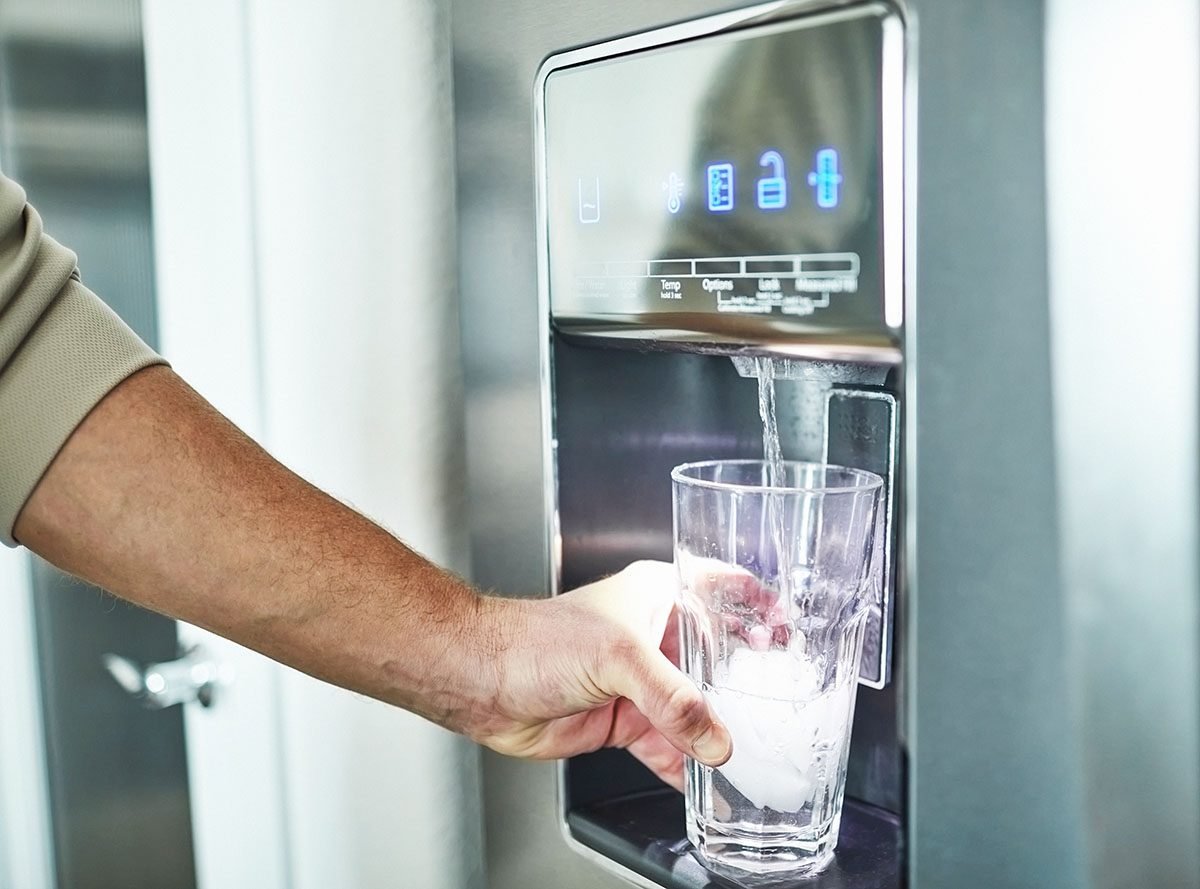Introduction:

Image: myheavenlyrecipes.com
Water dispensers in refrigerators have become a modern convenience that offers instant access to cold and refreshing water. However, when these dispensers malfunction, it can cause frustration and inconvenience. If you’re facing issues with your refrigerator’s water dispenser, don’t despair. In this comprehensive guide, we’ll walk you through the troubleshooting process and provide step-by-step instructions on how to fix the problem yourself. Whether you’re dealing with a no-flow, slow-flow, or noisy dispenser, we’ve got you covered. Armed with the knowledge and techniques outlined in this article, you can restore your water dispenser to pristine working condition and enjoy a continuous flow of thirst-quenching water.
Understanding the Components of a Refrigerator Water Dispenser:
To effectively troubleshoot and repair a water dispenser, it’s crucial to have a basic understanding of its components. These typically include:
1. Water Filter: Responsible for removing impurities and sediment from the water.
2. Water Line: A tube that connects the water filter to the dispenser valve.
3. Water Valve: Controls the flow of water to the dispenser.
4. Dispenser Arm: The lever or button that activates the valve.
5. Water Reservoir: A container that stores the filtered water.
Troubleshooting Common Refrigerator Water Dispenser Issues:
1. No Water Flow:
• Check the Water Filter: A clogged water filter can restrict water flow. Replace the filter every 6 months or as recommended by the manufacturer to ensure optimal performance.
• Inspect the Water Line: Disconnect the water line from the dispenser valve and inspect it for kinks, bends, or leaks. Replace the line if necessary.
• Test the Water Valve: Disconnect the water line from the valve and press on the valve. If no water flows out, the valve may be faulty and need to be replaced.
2. Slow Water Flow:
• Clean the Dispenser Arm: Mineral deposits can accumulate on the dispenser arm, affecting water flow. Clean it with a mild detergent and water solution.
• Check the Water Reservoir: Low water levels in the reservoir can slow down the flow rate. Ensure the reservoir is filled to an adequate level.
• Inspect for Air Leaks: Air leaks in the line connections can disrupt water flow. Tighten all connections and replace any damaged fittings.
3. Noisy Water Dispenser:
• Check for Loose Connections: Water lines and connections can loosen over time, causing vibrations and noise. Ensure all connections are secure and tighten them if necessary.
• Inspect the Pump: A faulty pump can generate noise while operating. If the noise persists after checking connections, the pump may need to be replaced.
• Lubricate the Dispenser Arm: Friction between the dispenser arm and valve can produce noise. Lubricate the parts with a food-safe lubricant to minimize noise.
Conclusion:
Troubleshooting and repairing a refrigerator water dispenser can be a straightforward task with the right guidance and knowledge. By understanding the components involved and following the steps outlined in this article, you can restore your water dispenser to optimal functionality. If the issue persists or requires more advanced repairs, don’t hesitate to contact a qualified refrigerator technician to ensure proper operation and prevent any potential complications. Remember, a well-functioning water dispenser adds convenience and enhances your daily life, so it’s worth investing your time and effort to keep it running smoothly.

Image: www.familyhandyman.com
How To Fix Water Dispenser On Fridge